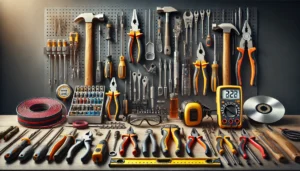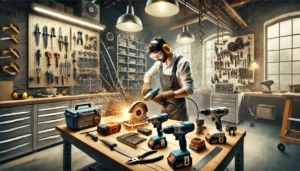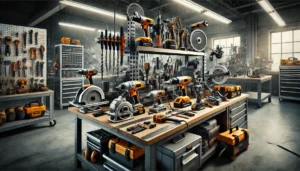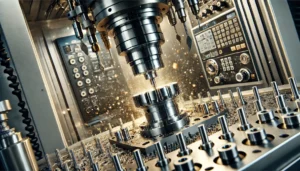Industrial belts are crucial elements of many machines, and especially in conveyor systems for power and material transmission. Regardless of its highly placed value, belts are still prone to common issues that can lower their effectiveness, increase downtime, and hasten the wear and tear of machinery. These issues and their effective resolution is very important for the optimum functioning of the industrial machines. In this document, we will analyze the most common problems associated with belts and ways to solve them.
1. Belt Slippage
Slipping of belt is the term associated with the belt gripping issues where it rotates without proper contact with the rotary elements. This leads to very poor transmission of power in the system. This problem can lead to system inefficiency, serious damage to the belt, and even other parts of the machinery.
Common Causes:
- Missing a certain proportion of tension
- Pulleys that are too worn out or damaged.
- Loading limits of the system are exceeded.
- Excessively dirty or wet surfaces of the belt.
Solutions:
- Make sure that various tensioning techniques are adhered to the design of the machine. Also ensure that over tightening of screw causes very ill fitting of certain parts.
- The pulleys of the worn out belt should be checked for wear marks. Worn out pulleys are a significant concern since they lead to slippage and need replacing.
- Do not exceed the limits of the system load. Always supervise the weight that is on the belt and pulley system.
- Ensure the belt and pulleys are dry and clean to provide the best hold on the belt.
2. Belt Mistracking
The term ‘mistracking’ refers to when the belt of the device has veered off its designated path. Out of spec usage, breakdown, and loss of material is what will occur. This issue may result in inefficiencies and excessive maintenance issues.
Common Causes:
- Misalignment of the conveyor frame or pulleys
- Worn-out or damaged idlers
- Worn-out or damaged idlers
- Uneven loading of the material on the belt
Solutions:
- Regularly check the alignment of the conveyor frame and pulleys. Ensure that they are parallel and properly positioned.
- Inspect idlers for wear and replace them if necessary.
- Properly install and tension the belt, ensuring it runs straight along the entire conveyor system.
- Center the material properly during loading to prevent uneven distribution that may cause the belt to mistrack.
3. Material Carryback
With regards to proprietary terminologies, carryback can be defined as material that becomes stuck to either the belt or a roller after exiting the point of discharge and is packed away to other terminals. This is a serious issue, increasing the chance of clogging, causing wear and even respecting materials.
Common Causes:
- Lack of robust belt cleaning methods that cater to multiple cleaning processes.
- Belt-associated sticky or wet residues.
- Improper loading methods or spills.
Solutions:
- Install primary and secondary belt cleaning systems that remove any materials stuck onto the slides.
- Stick on the right coating on the belt slides to further reduce the chances of materials, especially wet ones sticking onto them.
- Make sure the right amount of materials are loaded onto the belt systems to avoid spillages and promptly remove any leftover material.
4. Belt Tears and Splice Separation
Neglected tears and separations at the belt tears can put the entire system at a risk of collapsing and have significant effects on the functioning of the belt.
Common Causes:
- Improper splicing techniques
- Impact from heavy or sharp materials
- Excessive tension on the belt
Solutions:
- Double-check that the correct splicing tools and methods are being used to minimize the risk of repeatedly needing repairs to be performed.
- In areas that feed the slide with sharp and heavy objects, introduce impact-resistant bed sections or impact bars.
- Lower the tension on the belt because doing so puts less strain on the belt and reduces the chances of ripping.
5. Material Spillage
Material spillage pertains to the falling of materials off the edge of the belt leading to product loss and possible contamination of the environment. There can be spillages of minimal metrics that may be alarming in certain areas, and these have to be resolved instantly.
Common Causes:
- Mistracking of the belt
- Overloading the belt beyond its capacity
- Improper loading practices
Solutions:
- Look out for unequal disbursement of weight on the belt that adheres to a pre-established norm, and correct as necessary in order to maintain the belt’s correct operation.
- Do not go over the belt’s load bearing capacity. There is the option of utilizing measuring devices that would enable the checking of the weight on the belt.
- Construct and follow regulations that ensure proper feeding of materials to the belt to prevent excessive spilling.
6. Seized Rollers and Idlers
These pose the risk of the belt becoming slow or even idle entirely owing mostly to the increased wear and tear brought on by the higher-upper resistance paired with acceleration from the two types of rollers causing the idlers to seize.
Common Causes:
- Insufficient lubrication or caked on lubricant
- Obstruction and dirt getting stuck onto the rollers, which then gets caked onto the roller
- Rust or corrosion on the metal parts
Solutions:
- Failure to maintain these parts makes it increase in friction and wear out. A basic solution would be regular lubrication of the moving parts, particularly rollers and idlers.
- Remove the dirt and debris that surround the rollers and idlers to ensure they remain clean.
- Check all metallic parts for corrosion and, if required, apply protective coatings or replace the parts.
7. Belt Wear and Tear
Belt abrasion is a multifactorial process, but inordinate attrition can indicate lax maintenance, improper usage, or defects in any of the components of the system. Belts that are lost in attrition inefficiencies increase the operational costs as well as the downtimes of the organization.
Common Causes:
- Abrasive materials being handled
- Poor maintenance practices
- Overloading the system
- Incorrect tension or misalignment
Solutions:
- Inspect the belt regularly for signs of wear and replace it when necessary.
- Use belts that are suitable for the materials being transported. For abrasive materials, use belts made from durable, wear-resistant materials.
- Adhere to the manufacturer’s guidelines for maintenance, tensioning, and alignment to prevent excessive wear.
- Avoid overloading the conveyor system to reduce strain on the belt.
8. Unusual Noise or Excessive Vibration
Abnormal noise or vibration of the belt system often deviates from the acceptable level, which indicates some problems; for example, misalignment, excessive wear, or bad tensioning.
Common Causes:
- Misalignment of pulleys or components
- Worn-out idlers or bearings
- Incorrectly tensioned belt
Solutions:
- Tensioning and other maintenance practices should not only focus on the belt. All of the pulleys and other components should be regularly checked and realigned to ensure that they are working properly towards the same goal.
- Throw out defective idlers or bearings to minimize the friction and noise, which can be tolerated.
- Regardless of the industry, the correct adjustment of belt tension is crucial, so adjust it in accordance with the guidelines provided by the manufacturer.
Conclusion
Industrial belts are vital in the functioning of machines and conveyor operations. Issues such as slippage, mistracking, material carryback, and wear contribute to operational inefficiencies, system downtime, and expensive repairs. However, through routine inspection, corrective maintenance, and proactive troubleshooting, these issues can be contained and resolved timely. Indeed, effective understanding and rectification of common issues relating to the belts can increase its longevity which in return will reduce the operational costs and enhance productivity.










